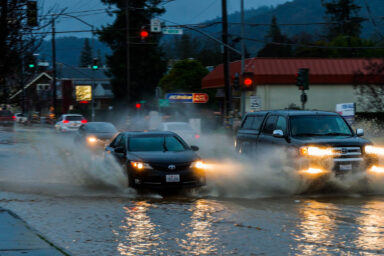Why 80 Million Americans Didn’t Vote ; Military Grade Weapons Do Not Make Cops or Cities Safer ; and More Picks 12/17
Despite Record Turnout, 80 Million Americans Didn’t Vote. Here’s Why. (Dan)
The author writes, “More Americans voted in 2020 than in any other presidential election in 120 years. About 67% of eligible voters cast ballots this year, but that still means a third did not. That amounts to about 80 million people who stayed home. To better understand what motivates these nonvoters, NPR and the Medill School of Journalism commissioned Ipsos to conduct a survey of U.S. adults who didn’t vote this year.”
Military Grade Weapons Do Not Make Cops or Cities Safer (Dana)
The author writes, “Over the last forty years, state and local police budgets have increased at astounding rates, with billions of dollars going toward military-grade equipment for law enforcement. The premise is simple: a better-equipped police force ought to be able to do their job — protecting the public — better, as well as offer more protection for the officers themselves. But two independent studies have punctured those ideas, finding that militarizing police forces does not reduce crime, nor does it increase officer safety.”
The Real Crime Isn’t Australian War Crimes — but a Chinese Cartoon About Australian War Crimes (Gerry)
From FAIR: “Is information inherently less trustworthy and authoritative because the source is Chinese? It’s a question Westerners must grapple with as the US government and corporate journalists intensify their online ‘psychological operations’ against China to manipulate public opinion in support of another Cold War. The racist Orientalist trope of Chinese people being inherently dishonest and unreliable sources of information was on display in Western media’s recent campaign to vilify a Chinese official for sharing a political cartoon criticizing recently reported Australian war crimes in Afghanistan.”
San Francisco’s Building Department Is a Mess (Reader Steve)
The author writes, “The Department of Building Inspection has long overseen a system that is such a tangled, confusing, old-fashioned mess that it’s impossible for a normal person to navigate. And that’s contributed to the pay-to-play culture that was allegedly adopted by some people associated with the department — including the director who resigned in March amid the widening City Hall corruption scandal and a former commissioner who faces prison time. It’s all such a complex web that ‘permit expediter’ is an actual profession in San Francisco in which connected people charge large sums — topping $200 an hour — to spend their days at the department walking their client’s permit applications to the right desks, making necessary changes and extracting permits faster than normal.”
A Trove of Ancient Hunting Artifacts Has Melted Out of a Norwegian Ice Patch (Mili)
From Gizmodo: “Researchers have uncovered what they’re calling a ‘bonanza’ of ancient arrows and other hunting equipment, as well as signs of prey, on a remote Norwegian ice patch. The cache is a striking example of the burgeoning field of ice patch archaeology, which is unfortunately growing as the planet melts down. Global warming is shaping the future of humanity while also revealing the distant past.”
‘Longest Known Exposure’ Recovered From Makeshift Camera Forgotten on UK Telescope (Dana)
The author writes, “At a glance it looks like a semi-pleasing printing error. Or a photo taken by mistake, filled with claustrophobic depth of field, shadows and murk – like so many accidental ‘closeups’ of the inside of a camera bag. But to those who know what they are seeing, this image bears a distinctive visual fingerprint shared only by a relative handful of others. And its makers believe this could be the most remarkable example of all. The lines climbing the image are a recording of the sun’s path across the sky, rising and falling with the seasons. Eight full cycles of them, in fact – exposed through a pinhole aperture onto a piece of photographic paper inside a cider can, which almost a decade ago was pointed at the horizon and attached to a dome at University of Hertfordshire’s Bayfordbury Observatory. Then forgotten about.”



